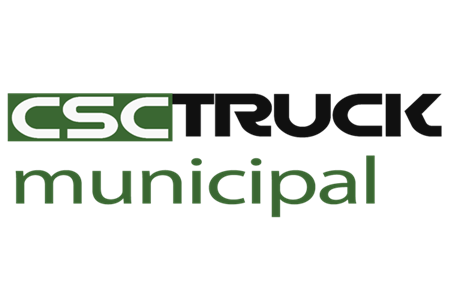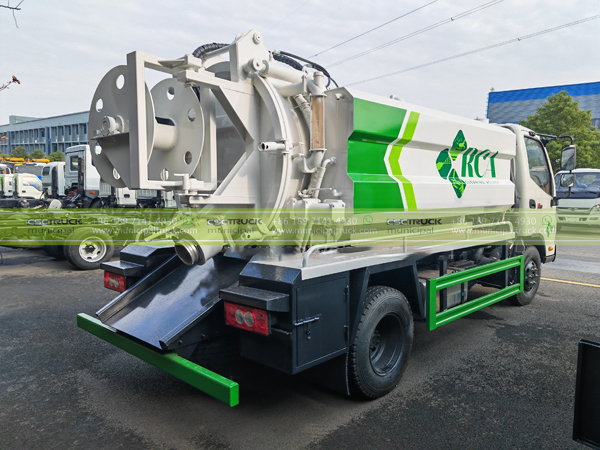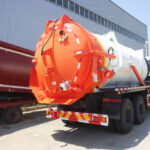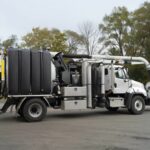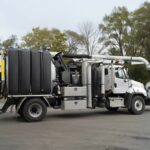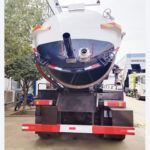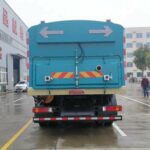Beneath the hum of urban life lies a network as vital as roads or power grids: municipal sewer systems. When a 30-foot root mass chokes a 24-inch pipe under a hospital district, or solidified grease paralyzes a downtown main, the consequences cascade from environmental hazards to six-figure emergency repairs. Traditional rodding or chemical treatments falter against such complex obstructions. Enter the high-pressure jetting system – the beating heart of the combo sewer jetter truck. This technology isn’t merely an add-on; it’s the non-negotiable core that transforms reactive unclogging into proactive infrastructure stewardship. For municipalities and contractors, understanding its engineering and strategic value is critical to resilient, cost-effective operations.
Combo Trucks Decoded: More Than Just Vacuum
A combo sewer jetter truck integrates two mission-critical systems:
- Vacuum/Pumping Unit: Extracts debris, sludge, and wastewater.
- High-Pressure Jetting System: Propels water at 1,500–4,000 PSI through specialized nozzles to fracture blockages.
While vacuum technology handles removal, jetting delivers the offensive capability to dislodge tenacious obstructions. Without it, combo trucks would merely shuttle wastewater without solving root causes. The synergy is intentional: jetting breaks down intrusions; vacuuming clears the fragments. This dual-action design tackles challenges single-function vehicles cannot address.
The Physics of Power: Why Pressure Determines Success
High-pressure jetting leverages hydrodynamic force to overcome adhesion, compaction, and structural intrusion. Key principles include:
1. Pressure vs. Flow Dynamics
- High Pressure (1,500–4,000 PSI): Shatters concrete-like grease (fatbergs), mineral deposits, and root masses through concentrated energy transfer.
- High Flow (15–60 GPM): Flushes dislodged debris toward the vacuum inlet, preventing re-accumulation.
2. Nozzle Intelligence
Advanced nozzles manipulate spray patterns for specific tasks:
- Forward Jets: Blast central blockages (e.g., sediment plugs).
- Rear-Facing Jets: Propel the hose through pipes while scouring walls.
- Rotary Heads: Grind roots or mineral scale via 360° abrasion.
Without calibrated pressure and nozzle engineering, jetting degrades to inefficient spraying.
Critical Applications Where Jetting Reigns Supreme
1. Bio-Mechanical Intrusions: Roots & Fatbergs
Tree roots exploit microscopic pipe cracks, growing into dense mesh networks. High-pressure jetting severs roots at the intrusion point, while vacuuming extracts biomass. Similarly, layered fats/oils/grease (fatbergs) – resistant to chemicals – require hydrodynamic shearing.
2. Sediment & Mineral Consolidation
Grit, sand, and mineral deposits cement into concrete-hard barriers over time. Jetting fractures these matrices where mechanical augers merely compact them.
3. Preventive Maintenance & Pipe Restoration
Routine jetting removes latent buildup before blockages form. In combined systems, it prevents overflow events during storms by maximizing flow capacity. Post-repair, it cleans residues from cured-in-place pipe (CIPP) liners.
The Cost-Benefit Equation: Jetting as Financial Infrastructure
Investing in high-pressure jetting capabilities generates measurable returns:
| Metric | Traditional Rodding | High-Pressure Jetting |
|---|---|---|
| Blockage Clearance Time | 3–6 hours | 45–90 minutes |
| Pipe Damage Risk | High (mechanical stress) | Low (non-contact) |
| Preventive Efficiency | Minimal | High (removes biofilm) |
| Long-Term Maintenance | Frequent repeats | 60–80% recurrence reduction |
- Labor Optimization: One operator manages jetting/vacuum cycles, reducing crew costs.
- Emergency Mitigation: Preventing sewer backups avoids regulatory fines, road closures, and property damage claims.
- Asset Longevity: Removing corrosive debris extends pipe lifespan by 15–20 years.
Engineering Resilience: The Jetting System Breakdown
A professional-grade jetting system demands integrated components:
1. Pump Technology
Triplex-plunger pumps generate sustained ultra-high pressure. Critical features:
- Thermal sensors preventing overheating during extended runs.
- Bypass valves maintaining pressure during nozzle repositioning.
- Corrosion-resistant seals handling abrasive fluids.
2. Hose & Reel Systems
Kevlar-braided hoses withstand pressure surges and pipe abrasion. Auto-retracting reels with tension control prevent kinks during deployment.
3. Water Management
Onboard tanks (500–3,000 gallons) recycle wastewater for jetting, reducing external water dependency. Filtration systems protect pumps from ingested debris.
Safety & Environmental Imperatives
High-pressure jetting minimizes risks endemic to alternatives:
- Chemical-Free Operation: Eliminates toxic solvent use (e.g., root-killing herbicides).
- Reduced Confined-Space Entry: Remote nozzle deployment limits worker exposure to hazardous atmospheres.
- Infrastructure Protection: Non-destructive to pipes versus mechanical drills.
- Spill Containment: Vacuum capture ensures dislodged contaminants (heavy metals, pathogens) don’t infiltrate soil.
Future-Proofing Municipal Fleets: Beyond Jetting Alone
While high-pressure jetting anchors combo truck functionality, holistic fleet strategy integrates complementary assets. Professional sewer trucks excel in reactive scenarios, whereas compactor garbage trucks streamline solid waste volumes. For municipalities seeking unified solutions, platforms like CSCTRUCK Municipal offer modular chassis supporting jetter/vacuum bodies, refuse compactors, or winter spreaders. This versatility allows rapid reconfiguration for seasonal demands – jetting root-blocked sewers in spring, then switching to refuse bodies for summer tourism peaks – all on a single, maintenance-optimized platform. The integration of telematics across these systems centralizes data analytics, transforming isolated cleanup tasks into predictive infrastructure management. As cities prioritize resilient, multi-role assets, the combo jetter truck’s high-pressure core isn’t just about clearing today’s blockage; it’s about safeguarding tomorrow’s urban viability through engineering that merges force with finesse. The silent pulse of pressurized water through subterranean pipes echoes a fundamental truth: in the battle for urban resilience, pressure isn’t just power – it’s prevention.
